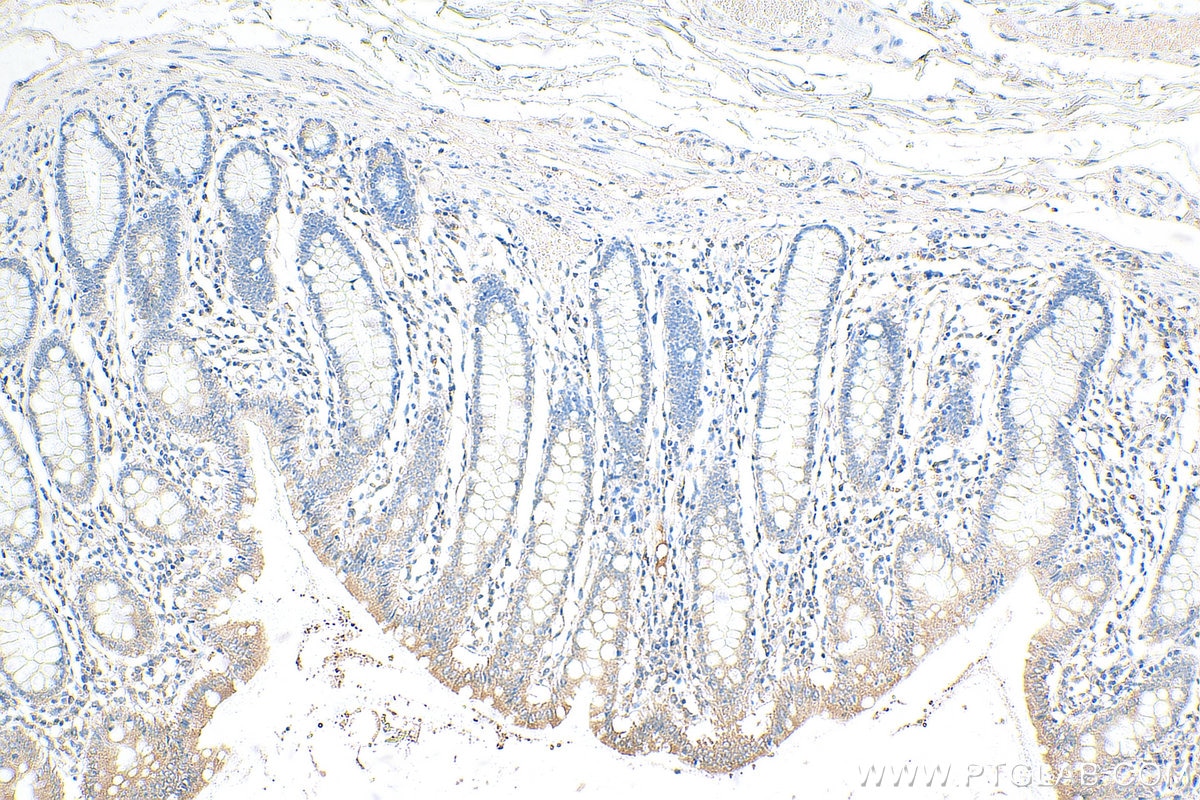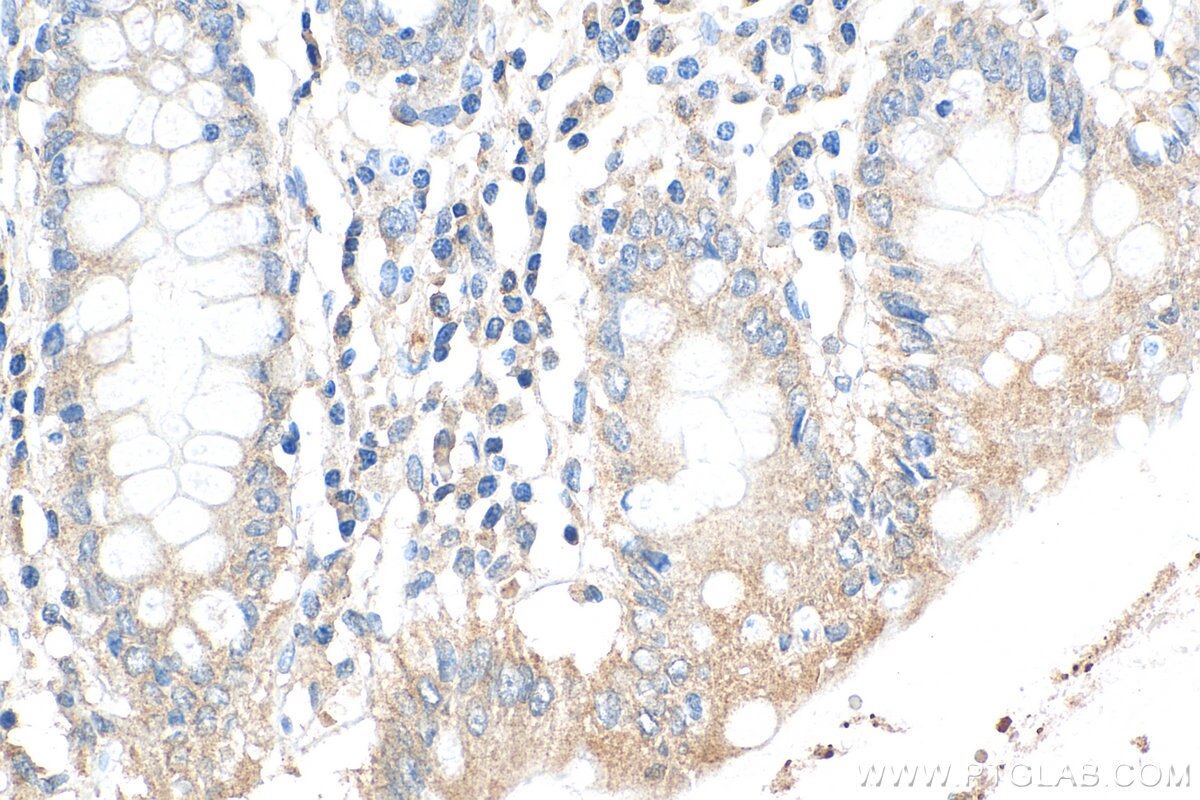ITM2C Polyklonaler Antikörper
ITM2C Polyklonal Antikörper für IHC, Indirect ELISA
Wirt / Isotyp
Kaninchen / IgG
Getestete Reaktivität
human
Anwendung
IHC, Indirect ELISA
Konjugation
Unkonjugiert
Kat-Nr. : 13601-1-PBS
Synonyme
Geprüfte Anwendungen
Produktinformation
13601-1-PBS bindet in IHC, Indirect ELISA ITM2C und zeigt Reaktivität mit human
| Getestete Reaktivität | human |
| Wirt / Isotyp | Kaninchen / IgG |
| Klonalität | Polyklonal |
| Typ | Antikörper |
| Immunogen | ITM2C fusion protein Ag3876 |
| Vollständiger Name | integral membrane protein 2C |
| Berechnetes Molekulargewicht | 230aa,26 kDa; 267aa,30 kDa |
| Beobachtetes Molekulargewicht | 30 kDa |
| GenBank-Zugangsnummer | BC025742 |
| Gene symbol | ITM2C |
| Gene ID (NCBI) | 81618 |
| Konjugation | Unkonjugiert |
| Form | Liquid |
| Reinigungsmethode | Antigen-Affinitätsreinigung |
| Lagerungspuffer | PBS only |
| Lagerungsbedingungen | Store at -80°C. 20ul Größen enthalten 0,1% BSA. |
Hintergrundinformationen
The Integral membrane protein 2C (ITM2C) is a type II integral transmembrane protein belonging to a family composed of at least two other members, ITM2A and ITM2B. ITM2C, often called transmembrane protein BRI3, is highly expressed in brain tissue. Yeast two-hybrid screen system revealed that BRI3 could interact with beta-secretase beta-amyloid protein converting enzyme (BACE)1 and the microtubule-destabilizing protein SCG10 (STMN2). It may play a role in TNF-induced cell death and neuronal differentiation. BRI3 was found to inhibit the various processing of amyloid precursor protein (APP) by blocking the access of alpha- and beta-secretases to APP, competitive inhibition of APP processing by BRI3 may provide a new approach to Alzheimer disease (AD) therapy and prevention.





